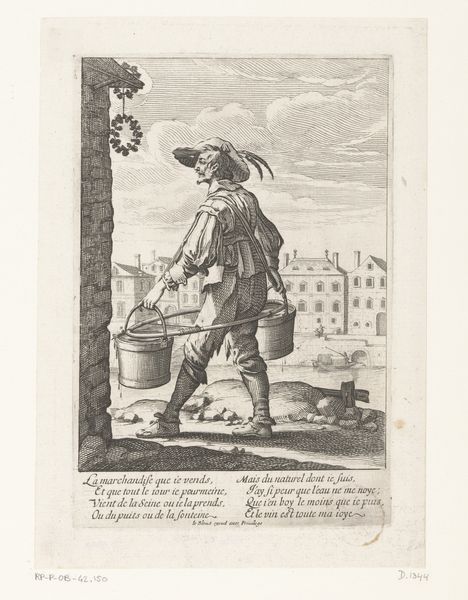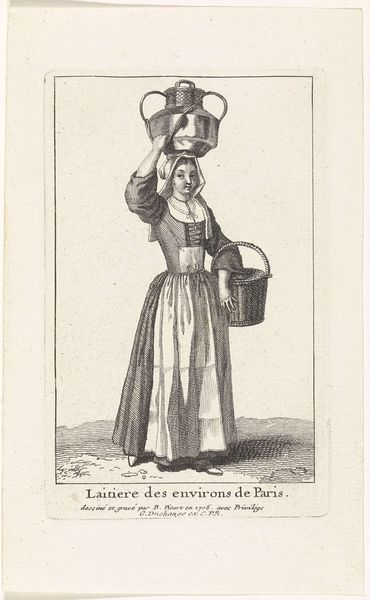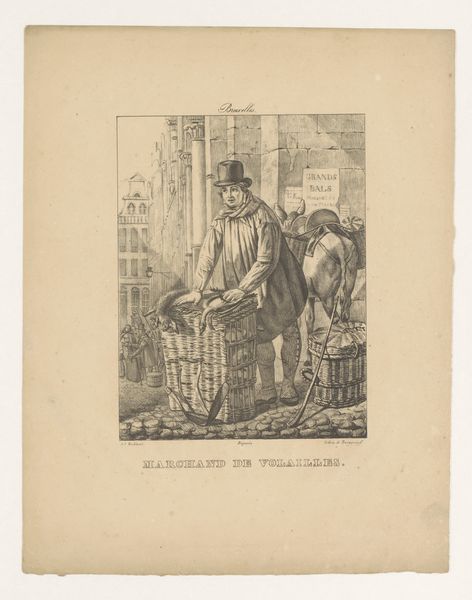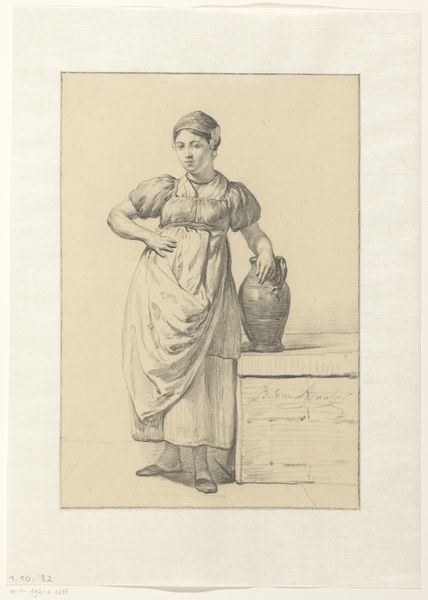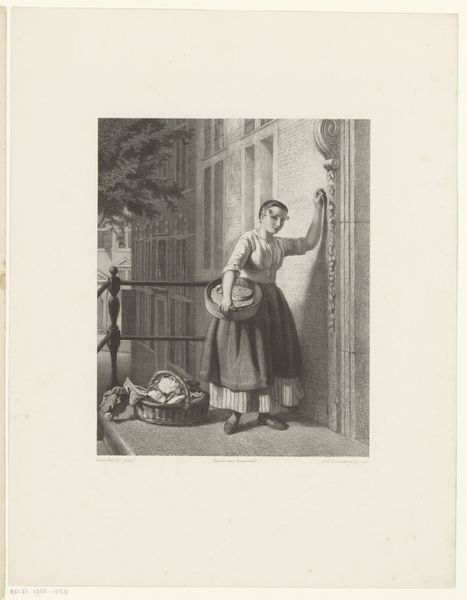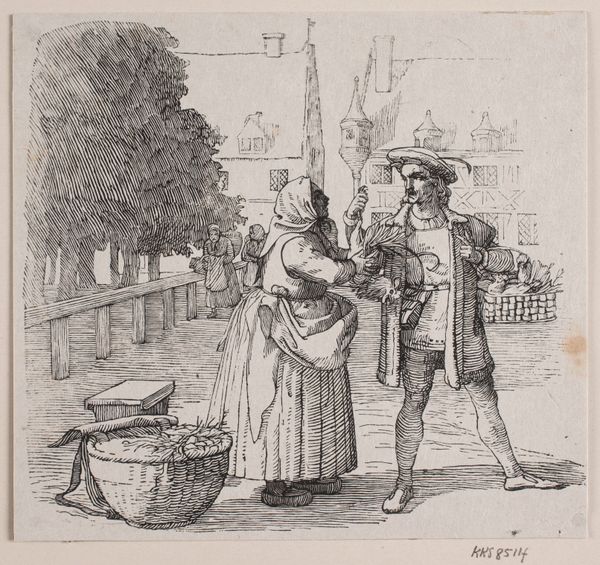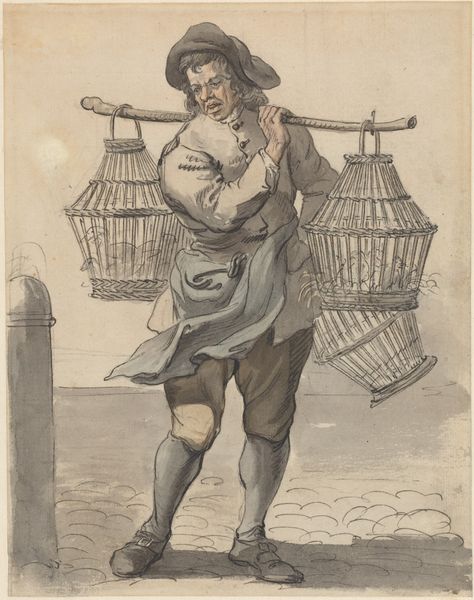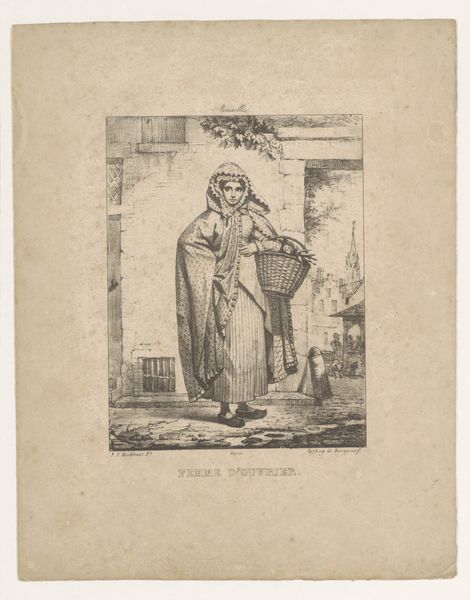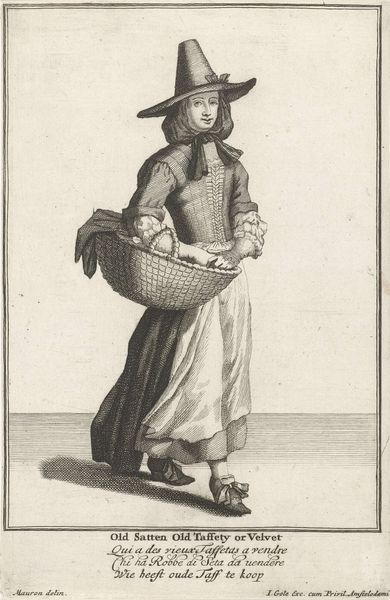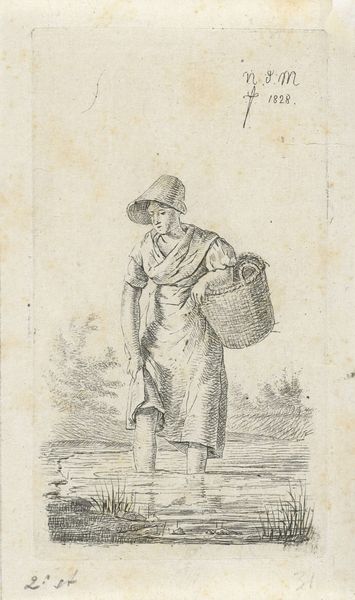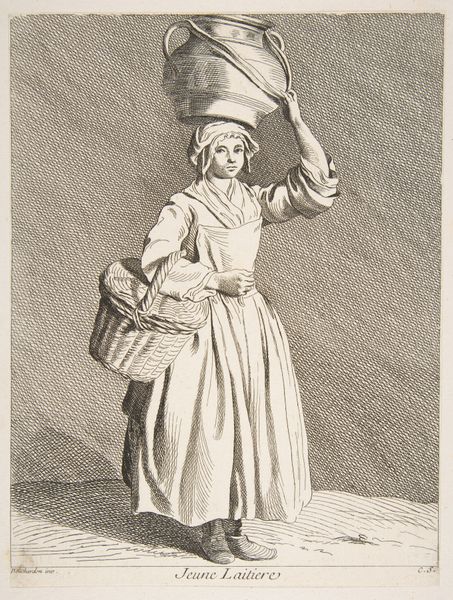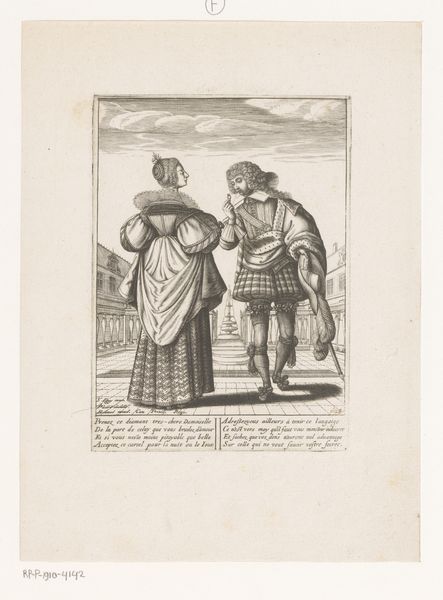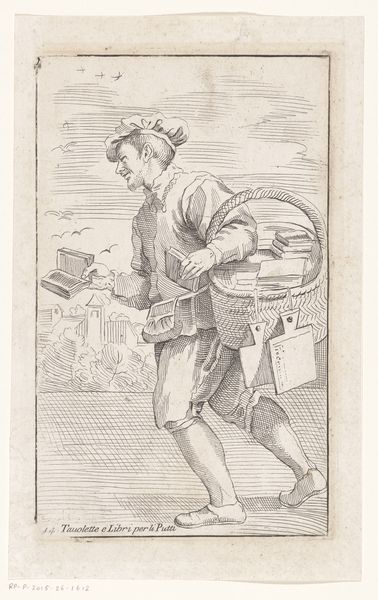
engraving
#
portrait
#
neoclacissism
#
old engraving style
#
portrait reference
#
portrait drawing
#
genre-painting
#
engraving
Dimensions: height 182 mm, width 123 mm
Copyright: Rijks Museum: Open Domain
Curator: Christoph Weigel's "Melkverkoopster," or "Milk Seller," created in 1797, exemplifies the Neoclassical interest in genre scenes through the refined medium of engraving. What are your initial observations? Editor: The overriding impression is one of burdened labor, wouldn’t you agree? The milk seller is presented as stoic, almost statuesque, despite what must be immense physical strain. Curator: Precisely! Weigel masterfully uses line and shading to sculpt the figure, accentuating the weighty basket and her determined gaze. Consider how the meticulous rendering of textiles contrasts with the stark architectural backdrop. Editor: But consider further that this is not simply an aesthetic study of line! It is a document, albeit idealized, of a woman’s work in 18th-century Dutch society. How were the lives of working-class women valued or devalued in this time, depicted often to show the romance of rural life that concealed grueling poverty? Curator: Undoubtedly, social commentary simmers beneath the surface. Yet, structurally, the print operates through carefully calibrated visual balances. The pyramidal composition focuses our eye directly upon her face, from which all elements seem to emanate. Editor: That "emanating" face has history written on it, a tale of gendered expectations and socio-economic stratification. It's fascinating to consider how she represents both the burden and the resilience inherent in the lives of laboring women. What narratives could she share, removed from the male gaze of the artist? Curator: These narratives, imagined or real, gain additional richness through formal study. Without that close viewing, our understanding remains necessarily flattened, lacking in key aspects that reveal themselves when the artist's choices, conscious and unconscious, are considered carefully. Editor: Perhaps instead, the stories of those absent from our galleries need deeper exploration. Understanding is an active engagement that considers not only form, but impact. Curator: A symbiotic perspective—a dynamic dialogue between the inherent structure and surrounding context–proves that both vantage points allow richer comprehension. Editor: Absolutely! We can keep these women from remaining invisible to the dominant male voices in art, recognizing the work on their backs that sustained generations, while understanding too the techniques by which their narratives have been conveyed.
Comments
No comments
Be the first to comment and join the conversation on the ultimate creative platform.
